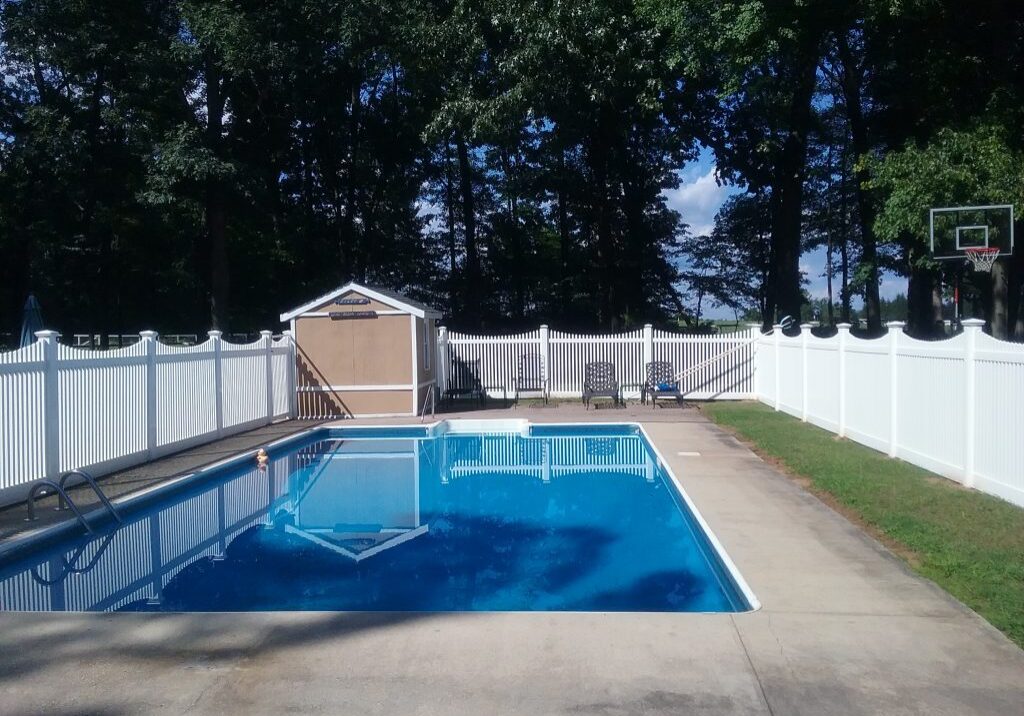All Categories
Featured

When your residential property remains in an area prone to severe weather, picking the right fence is not just about aesthetics however additionally toughness and security. Fences should hold up against everything from torrential rainfalls and severe winds to freezing temperature levels and intense warmth. Listed below, we explore the ideal fencing materials and layouts for residential or commercial properties managing challenging climates.
Best Fence for Windy Locations.
- Chain-Link Fences. Chain-link fencings are a top choice for gusty regions because of their open framework, which allows wind to travel through freely, reducing strain on the fence. Their durable steel framework supplies toughness, and minimal upkeep is called for.
- Shadowbox Fences. A shadowbox design, made from wood or composite materials, uses personal privacy while fitting airflow. The rotating slats lower wind resistance, protecting against damages during storms.
- Aluminum Fences. Light weight aluminum fencing is very resilient and lightweight, making it suitable for high-wind areas. The product resists corrosion and deterioration, making sure longevity in damp or damp conditions that frequently go along with strong winds.
Best Fence for Wet and Humid Climates.
- Vinyl Fences. Plastic is immune and non-porous to water mold and mildew, mold, and damage, making it an excellent option for properties in moist or stormy settings. In addition, plastic fences preserve their color and shape with little upkeep.
- Compound Fences. Composite products, made from a mix of timber fibers and plastic, are very resistant to dampness and won't warp, rot, or attract pests. They imitate the natural charm of timber without its vulnerabilities.
- Stainless Steel Fences. Stainless steel fencings, particularly those with a galvanized or powder-coated surface, offer superb resistance to corrosion and corrosion in wet climates.
Ideal Fencing for Snowy and Cold Areas.
- Concrete or Stone Fencings. Concrete and stone fencings are highly durable and can withstand hefty snow loads and freezing temperature levels without compromising or cracking. These fences are low-maintenance and durable.
- Vinyl Fences. Vinyl remains a favorite in cool environments due to its versatility and resistance to splitting during freeze-thaw cycles. Snow and ice can conveniently be removed from its surface area.
- Wrought Iron Fencings. Wrought iron fencings provide unequaled stamina, even in rough winters. A protective covering protects against rust, making certain that the fence keeps its structural integrity.

Ideal Fence for Hot and Arid Climates.
- Aluminum Fences. Light weight aluminum withstands extreme warm without fading, bending, or fracturing. Its reflective surface assists keep it trendy, and a powder-coated surface gives additional security from the sun.
- Plastic Fencings. Plastic fencing is UV-resistant, meaning it will not wear away under extended sunlight direct exposure. It's a long-lasting option for residential or commercial properties in desert-like environments.
- Bamboo Fences. Bamboo is normally heat-resistant and eco-friendly. It performs well in hot environments and supplies an unique, natural look. With proper therapy, bamboo fence can last for several years.
Variables That Impact Secure Fencing Durability in Extreme Weather. Foundation Security: Deeply secured messages with concrete bases assist preserve stability throughout high winds, hefty snow, or shifting ground due to extreme heat or cold. Weatherproof Coatings: Sealers, paints, or galvanization can safeguard wood, metal, and composite fencings from damages brought on by wetness, UV rays, and rust. Material High Quality: High-grade products like costs vinyl, treated wood, and stainless-steel offer better resistance to extreme conditions. Specialist Installation: Appropriate installment ensures your fence can hold up against environmental difficulties and preserve its architectural stability in time. Final thought. Purchasing the ideal secure fencing material and layout for your local climate condition is necessary for making sure security, resilience, and aesthetics. Choices like vinyl, light weight aluminum, composite, and rock fence offer premium resilience in severe environments, from hurricane-prone seaside locations to snow-laden mountain areas. By functioning with knowledgeable service providers and taking into consideration safety improvements, you can secure your building with a fence that stands the test of time and weather.
Latest Posts
Find Cost-Effective Auto Repairs with Montclare’s Limited-Time Service Specials
Published en
1 min read
Learn About Leading Vehicle Maintenance Services in Chicago – Drive with Confidence
Published en
1 min read
Don’t Miss Special Auto Repair Deals in Chicago at Montclare Auto Repair
Published en
1 min read
More
Latest Posts
Find Cost-Effective Auto Repairs with Montclare’s Limited-Time Service Specials
Published May 25, 25
1 min read
Learn About Leading Vehicle Maintenance Services in Chicago – Drive with Confidence
Published May 25, 25
1 min read
Don’t Miss Special Auto Repair Deals in Chicago at Montclare Auto Repair
Published May 20, 25
1 min read